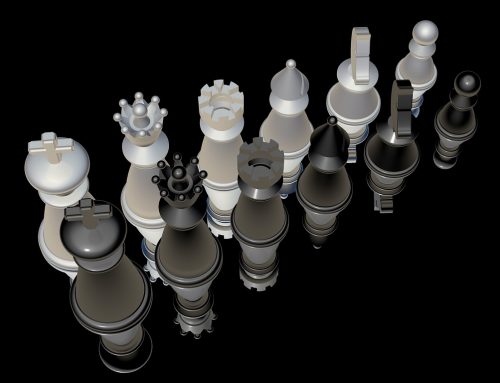The business world is full of terms that often come from words in another language (English) or acronyms of the segments of words that compose it.
In this article I want to explain what an analysis is SWOT, what steps you must follow to do it correctly. And, if you get to the end, give yourself a template to apply this analysis in your company.
Contenido
What is a SWOT ?
SWOT refers to the analysis of the situation we can carry out on any element of the company (or of the company itself) that will allow us to trace a subsequent strategy to achieve a competitive advantage.
Four elements are analyzed with respect to the object of the analysis:
- Threats: Refers to those aspects external to the test object that may be negative or harmful.
- Strengths: In this section we base our analysis on those positive questions of the current situation which has the object of the analysis.
- Opportunities: In this section we analyze which circumstances external to the object of the analysis can benefit and favor its development.
[/li_item][/checklist].
We can make a SWOT about the situation of our company, of our personnel, of a product we market,… Also if we want to start a business or launch a new product.
To carry out a SWOT implies reflecting objectively on what we want to analyze. If we are not realistic and sincere in our answers it will not be effective and we will not have a reliable diagnosis of the strengths and weaknesses of the company.
The SWOT Matrix is therefore a diagnostic tool that will help you in making decisions. Thanks to its result you will be clearer about the strategies you must follow in order to make progress and improve.
Strategies from SWOT analysis
To establish the strategies to follow in the development of our activity, the SWOT analysis is the starting point.
SWOT strategies will be based on the CAME Matrix:
- Facing THREATS Survival Strategies in this case will be useful to face the threats that attack us and allow us to stay afloat in the environment that is hostile to us.
- Keep STRENGTHS: We must focus our forces on Defensive Strategies that allow us to continue counting on the competitive advantages we have.
- Explore OPPORTUNITIES: And to face the opportunities presented to us we must develop Offensive Strategies and “attack” the opportunities not to let them escape.
In addition, in order to design strategies, we can take into account the crossover SWOT (analysis that confronts internal and external positive and negative aspects)
Thanks to the knowledge of those aspects that confront us, we will be able to combat the threats and weaknesses with our strengths and opportunities.
S + O = How we will use a Fortress to take advantage of an Opportunity. (Offensive or Advancement Strategies)
S + T = How to use a Fortress to neutralize a Threat. (Defensive Strategies)
W + O = How to rectify a Weakness in order to take advantage of an Opportunity. (Reordering Strategies)
W + T = How we can work on a Weakness to minimize the impact of the Threat. (Survival or Defence Strategies)

The idea of contrasting the points in this type of Matrix is to originate improvement options and ideas to combat the negative points and expand the positive ones. It will simply serve to go one step beyond CAME strategies, using the resources at our disposal.
How to do a SWOT step by step
Creating a SWOT analysis is quite simple. It is a process similar to brainstorming, only that it is done in relation to the commented aspects.
A mistake made by many companies is to perform SWOT analysis without first having a clear objective. Not only do we perform a SWOT analysis to “know” the current situation of our company, but we do it to improve a specific aspect, increase sales, launch a new product, … Knowing the reason will help us to know which aspects are positive or negative in relation to the objective. It is also possible that the same idea appears in more than one point.
From there you just have to sit down and fill in the SWOT template, which is nothing more than a box with four sections where you can include the data.
In-depth analysis
The first thing we need to look at is the current situation of the environment. It will help us to know if our company (or analyzed product) is up to the task, where it is and we can better visualize the current situation.
Then we will begin with the internal analysis. That is, we will analyze the Weaknesses and Strengths. We must study each aspect of the object to be analyzed. If it is a company we will analyze its departments, if it is a product all its qualities,…
Once we are clear on these points, we must move on to analyse the external aspects: Threats and Opportunities. Knowing the environment of the object to be analysed (company, new project, product, company personnel, etc.) will give us the key information to finish our analysis.
We can assign a rating to the idea of each point, to get a less subjective view. So, with the calculation of the total score, see in which aspect we have more points. It will help us to see where we can focus the strategies.
We can decide, to assign a score from 1 to 10 (for example), how important or what impact each idea of each point has in relation to the objective by which the SWOT is carried out.
It will be a good option to know which strategies to focus on.
Get conclusions
This type of analysis helps us to draw the necessary conclusions to make action plans and implement strategies that allow us to react in time and improve a situation.
You should periodically review the analysis to see if the strategies being implemented are having the intended effect.
From there, examining evolution can be useful. We will be able to follow the system of points that we have commented before to see the evolution and if we must replant ourselves in some moment the strategies to follow.







Leave A Comment